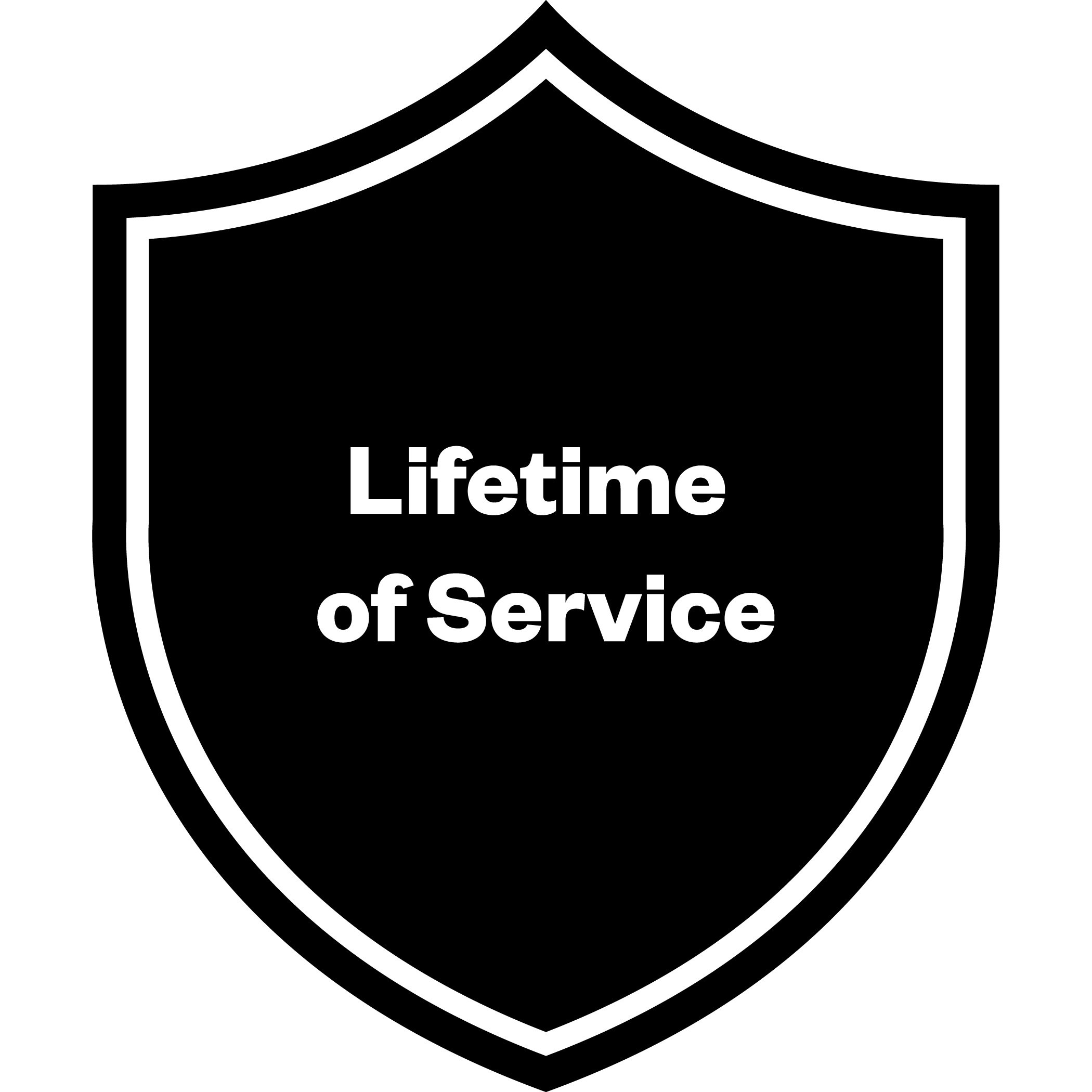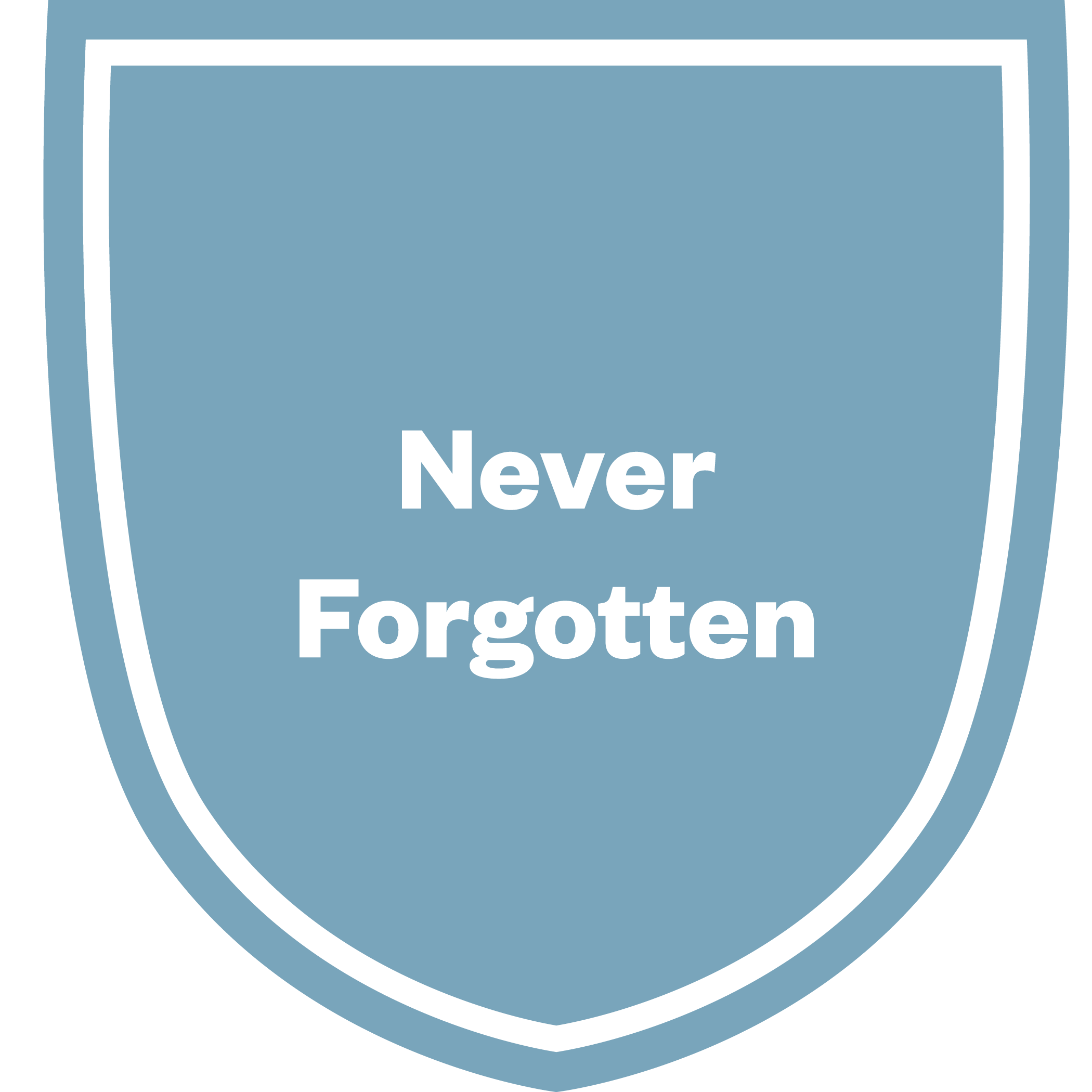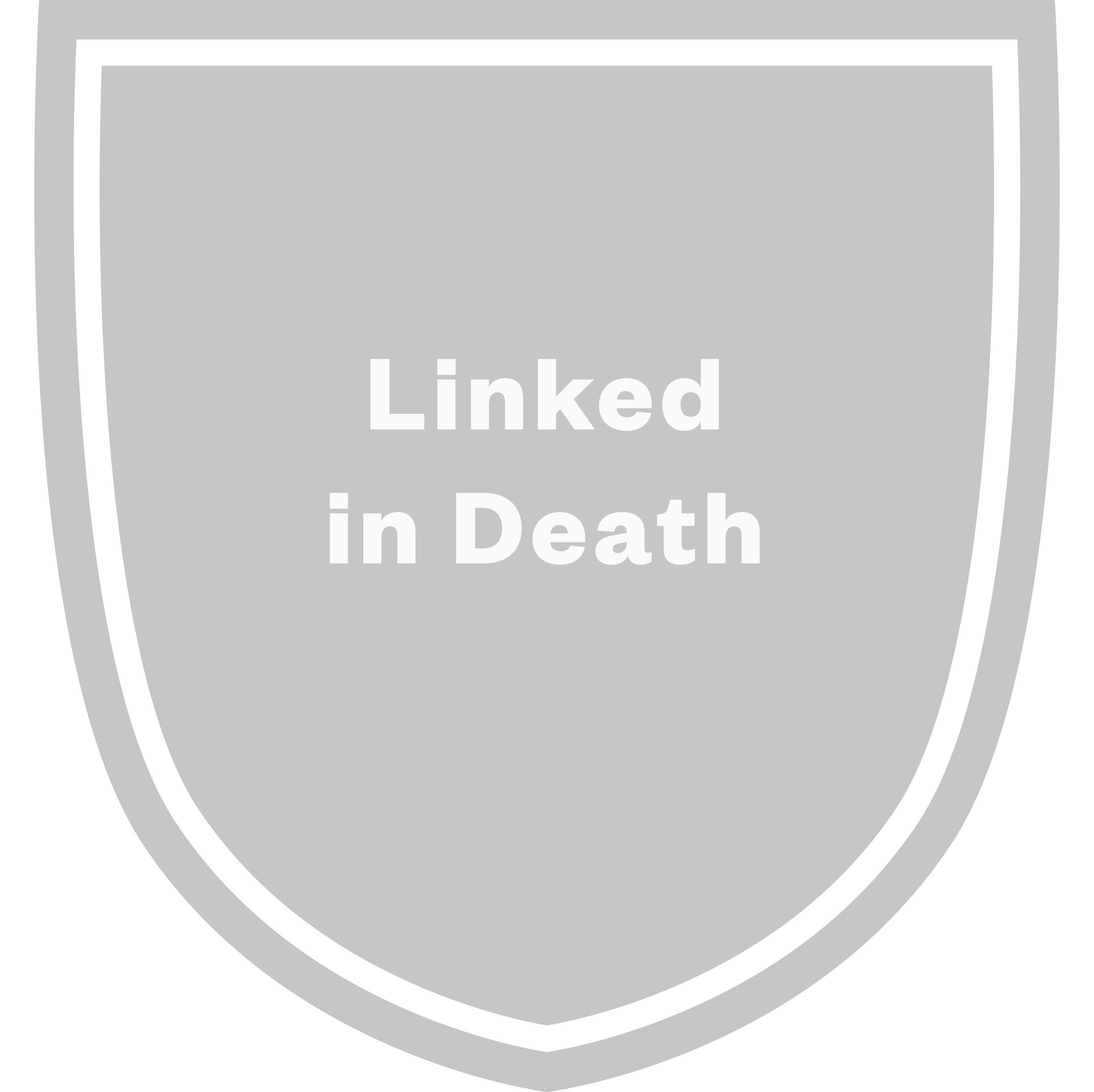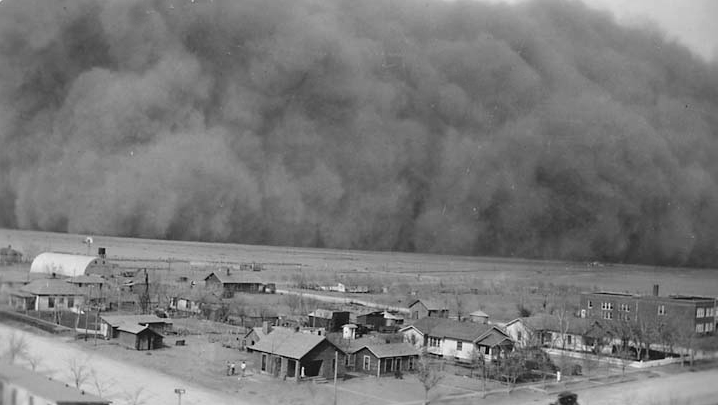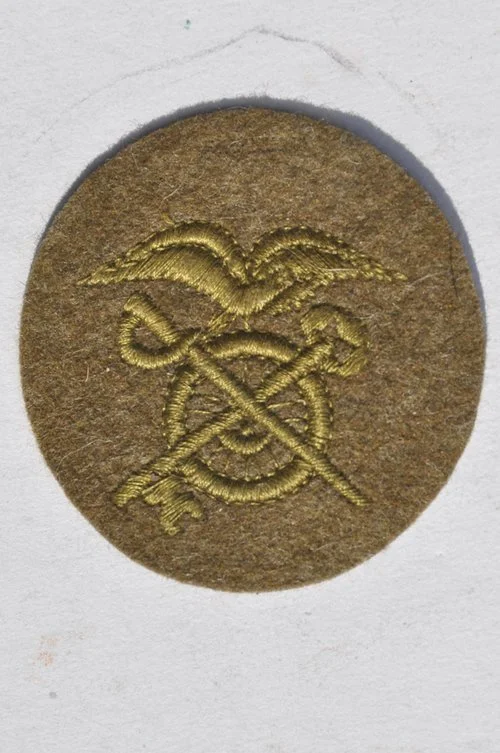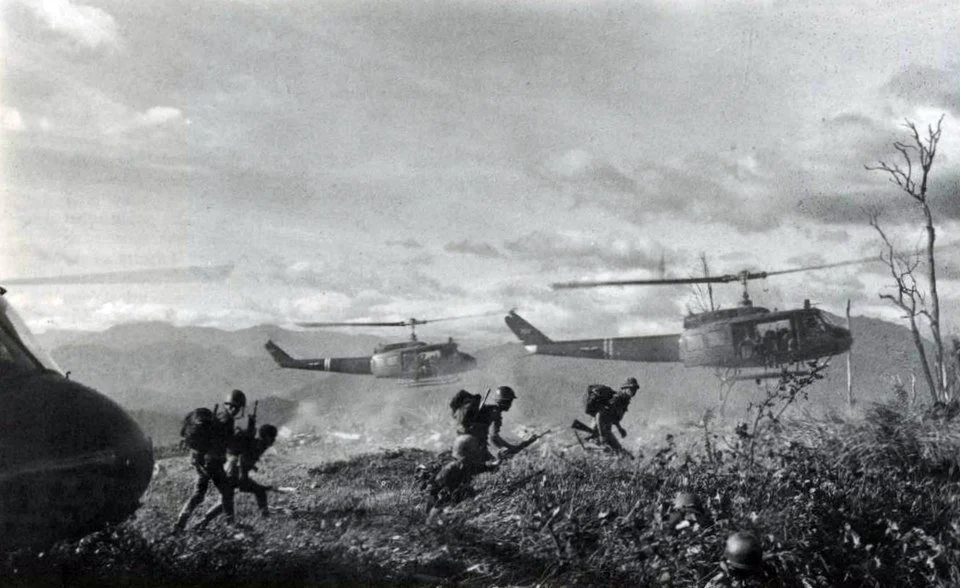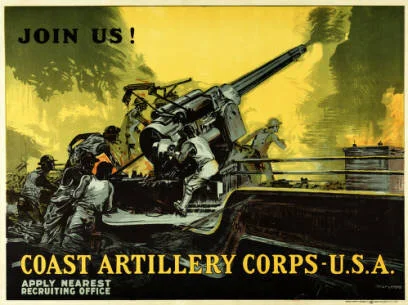John Donald Keller was born on January 18, 1935, in Denver, Colorado, to Evelyn Donna DeLuca and Lewis Henry Keller. John (affectionately named “Donnie” by his family) grew up with his parents and older sisters, Betty and Josephine, on Mariposa Street right across from the La Alma-Lincoln Park neighborhood near downtown Denver.
Howard William McKinley Jr was born on September 25, 1917, to his father, Howard McKinley, and his mother, Muriel McKinley. He was born in Phoenix, Arizona, where his father worked as a fireman on a nearby railroad.[1]
It was June 2, 1927, when Albert and Laura Skari, two farmers from Arnegard Township, North Dakota, welcomed their twins into the world. One of these children was Vernon Edwin Skari. Vernon and his twin sister Verna were the youngest of Albert and Laura’s ten children, all of whom were raised on the family farm and ranch in North Dakota.[1]
Charles Neil Zorn was born on June 7, 1930, to Glenn and Grace Zorn in Muskegon, Michigan. Muskegon, a city located on the shores of Lake Michigan, was like many others during the 1930s, economically devastated by the Great Depression. Most notably, Michigan fared worse than the rest of the country in the Depression due to a heavy reliance on the auto industry for its labor market.
Foster Duane Wendell was born on January 18, 1941, to Howard and Harriet Morley Wendell. Foster was one of four children and was the second son.
Dick Daisuke Momii was born on January 29, 1924, on a farm in Brighton, Colorado, the son of George Shumpei Nawata and Takeno Momii. His parents immigrated to the United States, his father first living in Hawaii and Wyoming before settling in Colorado.
Bravery can be hard to come by. For Ronald Eugene Dusch, however, bravery was almost second-nature. Born January 11, 1938, to Emma Van Horn and Charles Dusch,
In the dusty expanse of southeastern New Mexico, where the wind carries the scent of mesquite and open skies stretch endlessly, Buster Tom Chidester was born on February 4, 1923, in the small town of Tatum.
Francis Robert "Frank" Royal Sr. was born on June 17, 1915, in the quiet town of Manzanola, Colorado—a place small in size but large in the shaping of a man who would grow to become one of America’s most decorated and enduring fighter pilots.
On January 21, 1918, Frank Leigh Gitchell Jr. was born in Charlottesville, Virginia, to his parents, Frank Leigh Gitchell and Laura Mae Miller. Before Frank’s first birthday, his mother passed away, leaving behind her husband and three children. Frank was the youngest of the Gitchell children with two older sisters. Following Frank’s first year of high school, he dropped out and pursued a job with University Press at the University of Virginia.
Hason “Haas” Fujio Yanaga was born to Haishburo and Tamano Yanaga both of whom were Japanese immigrants to the United States, on August 21, 1926. Hason, the fifth boy of six that blessed the Yanaga home, grew up on a 160-acre farm near Fort Lupton, Colorado.
The bombing of Pearl Harbor on December 7, 1941 changed everything. The devastating, surprise attack by Japan marked the end of the isolationist ideals of many citizens of the United States and ushered in a period of domestic unity across America during the Second World War.
After World War One, Germany was a miserable place to live. Inflation was through the roof, the nation’s military was limited, and people starved in the streets.
When the United States entered World War II, thousands of men put their lives on hold and instead risked them to serve their country. Sherwin George Desens was one of these men, and his decision to enlist began a decades-long career of service that took him from the skies above Normandy down to a prison camp in his grandfather’s homeland.
William Howard McClure was one of the lucky few who not only survived the atrocities he faced while he was a Prisoner of War, but also made a life for himself in the aftermath of World War II.
Often, the phrase “American hero” connotes someone born and raised in the United States who bravely served our country without hesitation. But what if they were born in a different country, on an entirely different continent?
During wartime, young people are often asked and expected to perform acts of unimaginable heroism. Gerald Kraus was one such young man who went above and beyond what was asked of him when enlisted in the Marines at just twenty years old, after the North Korean invasion of South Korea in 1950.
On November 25, 1941, Jimmie was enlisted into the Air Corps; however, he would not remain in this position for long.
Irvin and Zouie Little Thunder share the story of so many 20th century Native children who were subject to cultural erasure, abuse, and distance from families so key to their resilience. They share the story of entering the U.S. military while experiencing unequal freedom and citizenship, fighting for the country that so often fought their existence.
Nolan Lee Ashburn was born on April 8, 1923, in Wilder, Tennessee. He was the son of a coal miner and a coal miner’s daughter, George and Effie Ashburn.
Garrett Samuel Voorhees was born in Denver, Colorado in August of 1892 to parents Ralph C. Voorhees, and Fannie Bomberger. Garrett had three siblings, one brother named Ralph and two sisters named Mary and Ruth. Seemingly, Garrett travelled frequently throughout his life, having lived in Colorado and Texas.
Hen-shaped chocolates, perfume, “affy-tapples,” Famous Yodora Deodorant Cream for 29 cents, handmade cordial cherries, cough drops: all this and more lined the shelves at the Bernacchi Pharmacies where Robert Bernacchi and his brothers carried on their parents' legacy.
Irvin and Zouie Little Thunder share the story of so many 20th century Native children who were subject to cultural erasure, abuse, and distance from families so key to their resilience. They share the story of entering the U.S. military while experiencing unequal freedom and citizenship, fighting for the country that so often fought their existence.
Robert K. Aaker served in the US Army Air Corps in World War II, stationed in England. Robert was a flight engineer and technical Sergeant with the 734th Bomb Squadron of the 453rd Bomb Group, flying missions out of Old Buckenham, England.
As Walter Arthur Beck grew into his young-adult days, he pursued what many young American men wanted to or were forced to do, which was enlisting in a desirable branch of the United States Military during the Great War. For Walter this was the Coast Guard. Walter set out for “the great adventure,” as many young men did across the globe.
Bradford Bowker started his service in the Navy on October 15, 1940. In his early military life, just around the time before World War II, Bowker was a lieutenant in the Philippines helping build / rebuild airstrips in unsafe distance from enemy fire and territory. Bowker later made the rank of rear-admiral for the Seabees.
Madeliene enlisted in the Navy, serving in the Navy Nurse Corps at the Great Lakes Naval Hospital until her discharge as Ensign in the naval reserve in 1951. In 1941, there were only 1,700 nurses in the navy. After the attack on Pearl Harbor, their numbers increased greatly and by 1945, there were over 11,000 nurses in the navy
World War II broke out and Lou knew she could not be idle and watch her country move forward without her. She joined the army and was sworn in as a Second Lieutenant Army Nurse before she was shipped overseas to join the 95th General Hospital in England.
Adventure and service have filled the lives of many, but few lives can match the action-packed life of Bill Myers. From a ranch up in the Rocky Mountains, to the war-torn skies above France, Korea, and Vietnam, to Saudi Arabia and back to Colorado, Myers lived a life that was nothing short of extraordinary. Beloved family and friends who treasured the veteran are the ones who continue his legacy to this day.
Dorothy “Dottie” Louise Williams-Young was born on January 7, 1923, in the Steel City of Pittsburgh, Pennsylvania. She was the oldest daughter of Howard and Edna Kunkle. Dottie graduated from Bellview High School in 1941, followed by the completion of her associate’s degree from the Grace Martin School of Business.
Diana Denise Ceciliani was born Diana Denise Clark on October 30, 1959, in Columbus, Ohio. During her youth, she grew up in the city and attended Walnut Ridge High School, where she joined the Student Council and effected change for the better within the school. She was also a member of the school’s chapter of the National Honor Society and belonged to the German club, showing a deep dedication to learning and leading.
As far back as she could remember, Yvonne was always interested in planes. It may have stemmed from listening to her father Elvin’s stories about serving in World War I as an airplane mechanic for the Navy’s Aviation Flight Unit.
Mercedes LaVay Peebles was born Mercedes LeVay Reichstein on July 18, 1921, in Kearney, Nebraska, to Eddie and Stella Reichstein. Eddie Reichstein was born in Iowa and worked at a filling station (modern-day gas station) and by the 1940s, he would own the station.
Betty O. Bowman was born on May 27, 1922 in New York. Her family settled in Staten Island, where she would grow up doing a plethora of activities such as swimming, bowling, tennis, and singing.
Viola and Abe Sherman could still hear the boom of fireworks on July 5th, 1918, as they welcomed their first child into the world.[1] Iona Sherman was born in Valentine, Nebraska, a quaint rural area where her grandfather had previously built a sod cabin.
Jeanette M. Wullenschneider (nee Reichenberger) lived a life of service. Born just three years after the end of the First World War on May 26, 1921, in a farmhouse outside of Andale, Kansas, Jeanette was the seventh of what would be eight children of Nicholas John Reichenberger and Regina Agnes Reichenberger.
On October 29, 1978, Adele and Edward Scutellaro would welcome their first and only baby girl into this world. Lynn Scutellaro would start her life in the quaint town of Mercerville, New Jersey, until her brother Richard was born in 1980, and the Scutellaros moved north to Lawrenceville, New Jersey.
On the night before Christmas, a baby girl was born who would dedicate her life to protecting this country. John Cuthbert had immigrated to the United States from Ireland in 1888 and eventually would meet his wife, Mary Carter. On December 24, 1914, they would welcome their first and only child, naming her after her mother. They lived their lives in Suffolk, Massachusetts; it is here that Mary would attend high school for all four years and work as a bookkeeper and cashier after graduation.
Harry Nelson Jr. had just celebrated his fifteenth birthday when he got the best present of all, a little sister. Pauline Vonda Nelson was born on March 3, 1934, in Salt Lake City, Utah, to Harry Sr. and Dorothy Nelson.
Dick Daisuke Momii was born on January 29, 1924, on a farm in Brighton, Colorado, the son of George Shumpei Nawata and Takeno Momii. His parents immigrated to the United States, his father first living in Hawaii and Wyoming before settling in Colorado.
The bombing of Pearl Harbor on December 7, 1941 changed everything. The devastating, surprise attack by Japan marked the end of the isolationist ideals of many citizens of the United States and ushered in a period of domestic unity across America during the Second World War.
It takes great strength and character to dedicate a portion of one’s life to serve in the American military. It takes even greater integrity and grit to serve in three global conflicts: World War Two, the Korean War and the Vietnam War. Though Albert Abelson and his Jewish family faced many challenges while they lived in Lithuania, he became an American hero.
William Jerome Bell saw the first televised war up-close and personal as a Black combat photographer in Vietnam. In March of 2009, William was interviewed about his military experience for the Veterans History Project, telling his story about his time as a Company Clerk and Combat Photographer all while the United States underwent desegregation and a tremendously unpopular war.
On November 25, 1941, Jimmie was enlisted into the Air Corps; however, he would not remain in this position for long.
During World War Two, many young men found themselves going straight from high school to war. These seventeen and eighteen year olds were exposed to some of the war’s most ferocious fighting before they could even legally buy a drink back home in the States. Othel Emery was one of these young American men.
Irvin and Zouie Little Thunder share the story of so many 20th century Native children who were subject to cultural erasure, abuse, and distance from families so key to their resilience. They share the story of entering the U.S. military while experiencing unequal freedom and citizenship, fighting for the country that so often fought their existence.
Entering into the Second World War provided new job opportunities, from weapons manufacturing to military service. One American who took advantage of these chances was Robert S. Bacca, who, along with taking part in New Deal projects, also served in World War II as an Air Corps pilot.
In Section T2 at Fort Logan National Cemetery, Rolf Wagschal lays beneath a headstone adorned with the Star of David, an indication of his Jewish faith that may have encouraged him to fight during World War II.
When war broke out between the U.S and the Axis powers Bob felt like he had to prove he was an American. Bob, just like any other young person heard the patriotic call of the nation, to lend his ability to the war effort.
John Donald Keller was born on January 18, 1935, in Denver, Colorado, to Evelyn Donna DeLuca and Lewis Henry Keller. John (affectionately named “Donnie” by his family) grew up with his parents and older sisters, Betty and Josephine, on Mariposa Street right across from the La Alma-Lincoln Park neighborhood near downtown Denver.
Charles Bradley Sullivan was born on February 12th, 1920, in Fort Logan, Colorado. He grew up in Wyandotte, Kansas, with his father, mother, and two sisters.[1] Charles’ father, Charles E. Sullivan, was born in Providence, Rhode Island, in 1888.
Samuel Fred Thompson Jr. was born on April 16th, 1929, in Fall River, Kansas.[1] Fall River is a city in Greenwood County, Kansas. Its namesake comes from the river it’s situated on, and the area has very humid summers and generally mild to cool winters.
Born on April 16, 1894, in DeKalb, Illinois, Clarence Herbert Peterson was the son of a Danish immigrant and an Illinoisan.[1] Records show that in 1900, he had 3 siblings, an older brother, Evans, born in 1891, a younger sister Irene, born in 1896, and a younger brother Raymond, born in 1899.
Born in Georgetown, Indiana, on January 26, 1926, Elmer Lee Hamby, son of Agnes and Elmer Hamby, spent the majority of his childhood on his family's sugar beet, alfalfa, and cantaloupe farm in Rocky Ford, CO, accompanied by his younger sister Mary and his older sister Ione.[1]
Frederick A. Praeger was born in 1915, into a Jewish family as the only child of Max Mayer Praeger, an Austrian publisher and newspaper managing director, and Manya Praeger.[1] Growing up in Austria, he studied law and political science at the University of Vienna from 1933 to 1938 and also spent time at the Sorbonne in Paris in 1934.
Earl Wilford Thompson was born in 1946 in St. George, Washington County, Utah.[1] He was the son of Joseph Claude Thompson (1917–1982) and Helen Thompson (Leavitt) (1921–2011). The Thompson family were active participants in The Church of Jesus Christ of Latter-day Saints. St. George, a Mormon church, in the late 1940s and 1950s.
Peter John Zamaites was born on October 19, 1911, in Worcester, Massachusetts, to parents George Zamaitis and Lucy Jankauskas.[1]From 1929 to 1931, Zamaites enlisted in the Marines and served as a Private for the 308th Company of the US Naval Reserve Armory in Worcester, the 307th Company in Los Angeles, California, and Company “L” of the Seventh Reserve Regiment in Philadelphia, Pennsylvania.
“...It is the preservation of wilderness areas, national parks, and monuments that give us fleeting glimpses of the wonders that nature has created. It is the parks, the gardens, and other recreational facilities that provide a constructive outlet for our leisure time.
Hason “Haas” Fujio Yanaga was born to Haishburo and Tamano Yanaga both of whom were Japanese immigrants to the United States, on August 21, 1926. Hason, the fifth boy of six that blessed the Yanaga home, grew up on a 160-acre farm near Fort Lupton, Colorado.
Angelo “Joe” Siccardi was born on October 30, 1926, in Paterson, New Jersey, to Anthony and Rose Siccardi. His father, Anthony, was an Italian immigrant, born in Italy according to the 1940 United States Census.
Earl Wettengel was born in Denver, Colorado in 1888. Before attending the University of Denver, evidence suggests that he went to high school at St. Francis De Sales in Denver, as in his later life he made several donations there. In his early life he also was a member of the Colorado National Guard, as indicated on his World War I draft card.
When the United States entered World War II, thousands of men put their lives on hold and instead risked them to serve their country. Sherwin George Desens was one of these men, and his decision to enlist began a decades-long career of service that took him from the skies above Normandy down to a prison camp in his grandfather’s homeland.
When Jerome Andrew Jacobs was deployed, he spent months traveling on an odyssey that took him from a Christmas in Casablanca, through the Suez Canal, a train across India, before finally ending with his first flight to China.
After high school, Alivan Compton Rea would join the Colorado Air National Guard, the aerial militia and reserves for the Air Force. After a few years serving in the Guard, Al enlisted in the Air Force. He worked as an Instructor, a Military Policeman, a Toe Target Operator, and a Firefighter during his time in service.
Master Gunner James Ralston Orris was a remarkable American. Serving his country in the Great War in the United States Army, he continued his contribution to this country by learning and educating others on the studies of Chemistry.
In 1942, Dorothy L. Starbuck joined the Women’s Army Auxiliary Corps (WAAC) and was stationed at Lowry Army Airfield in Colorado. There she acted as a commanding officer to a company of photo analysts. The creation of WAAC was a defining moment in gender roles in the United States. Women worked in hundreds of fields, like military intelligence and cryptography.
When war broke out between the U.S and the Axis powers Bob felt like he had to prove he was an American. Bob, just like any other young person heard the patriotic call of the nation, to lend his ability to the war effort.
As Asian Americans reckon with a wave of anti-Asian hate in the wake of COVID-19, honoring the forgotten stories of Filipino veterans acts as a healing reminder of what it means to be Pinoy and American.
It is no small task to occupy the role of both veteran and advocate. But their calls to service are similar. Both are patriotic acts that strive to better the country which one calls home. One man in particular, named Godofredo “Fred” S. Gomez, shows how the two intersect.
Although there are over 4 million Filipinx-Americans in the United States, their culture, languages, and traditions are rarely represented in predominantly white spaces and narratives. Second and third-generation Filipinos must lean on the legacy left by those like Felix B. Magalong Sr., who prove that Asians are accomplished enough to serve both their country at large and communities at home.
Though he only lived a short twenty-three years, Harry S. Heaney’s life would take him far away from home, and eventually into one of the most lamentable events in the history of the American West – the massacre at Wounded Knee.
While Dross may have enlisted in support of the Spanish-American War and missed it, the following years saw much more intense fighting in the Philippine-American War, wherein Dross did serve in the 30th United States Infantry regiment.
Born February 3, 1872, in Nashville, Tennessee, John Calvin Williams would eventually find his way across the continent, and across the world, while fighting in the United States Army.
Henry W. Mortimer, born in Westminster, Maryland around 1846, was a veteran of storied units from the Civil War and multiple engagements around the Great Plains.
On January 21, 1918, Frank Leigh Gitchell Jr. was born in Charlottesville, Virginia, to his parents, Frank Leigh Gitchell and Laura Mae Miller. Before Frank’s first birthday, his mother passed away, leaving behind her husband and three children. Frank was the youngest of the Gitchell children with two older sisters. Following Frank’s first year of high school, he dropped out and pursued a job with University Press at the University of Virginia.
John Donald Keller was born on January 18, 1935, in Denver, Colorado, to Evelyn Donna DeLuca and Lewis Henry Keller. John (affectionately named “Donnie” by his family) grew up with his parents and older sisters, Betty and Josephine, on Mariposa Street right across from the La Alma-Lincoln Park neighborhood near downtown Denver.
To be courageous during wartime requires a great deal of mental fortitude and self-trust. This is especially true when you find yourself fighting during the outbreak of a war halfway across the world. Within the first months of US involvement in the Korean War, Billy Lindley proved just how courageous young Marines can be.
Robert “Bob” Elliott Ball was born in Wichita, Kansas, on May 2, 1923. He grew up on a farm with his parents, Sidney and Lucinda, and his grandparents.
While the legacy of chemical warfare is complicated and somewhat infamous, the United States Chemical Warfare Service has occupied an important role within the US military.
When the United States entered World War II, thousands of men put their lives on hold and instead risked them to serve their country. Sherwin George Desens was one of these men, and his decision to enlist began a decades-long career of service that took him from the skies above Normandy down to a prison camp in his grandfather’s homeland.
While World War II impacted thousands of families, the stories of the Goodier family and those interned at Santo Tomas are undoubtedly unique and often overlooked. In the face of overwhelming odds and circumstances beyond his control, Benjamin did his best to keep his family safe.
While twentieth-century conflicts like World War II and the Vietnam War remain embedded in the American cultural consciousness, the Korean War has often been described as “forgotten” for its relative lack of representation and acknowledgment despite costing the lives of 36,914 American servicemen and an estimated 2,661,509 Korean civilians.
Entering into the Second World War provided new job opportunities, from weapons manufacturing to military service. One American who took advantage of these chances was Robert S. Bacca, who, along with taking part in New Deal projects, also served in World War II as an Air Corps pilot.
While in the Navy, Lon Egbert took the role of a lithographer and handled all the printing needs abroad two ships during his service from 1968-1972 on the USS Mount McKinley and the USS Blue Ridge. As a lithographer, Lon was trained to use a variety of machinery from offset presses to cameras that documented the ship’s journey.
On December 21, 1922, John Gifford Adamson was born in Englewood, Colorado. He was the son of Gifford Fred Adamson and Gertrude Minor. He lived his early childhood in Englewood, surrounded by his younger sister and parents during the Great Depression. By the time John was finishing high school, the United States was deeply entrenched in the Second World War. In 1942, John attended Otero Junior College and had just finished his football season when he received a draft notice.
Robert “Bob” Elliott Ball was born in Wichita, Kansas, on May 2, 1923. He grew up on a farm with his parents, Sidney and Lucinda, and his grandparents.
Nolan Lee Ashburn was born on April 8, 1923, in Wilder, Tennessee. He was the son of a coal miner and a coal miner’s daughter, George and Effie Ashburn.
Jeanette M. Wullenschneider (nee Reichenberger) lived a life of service. Born just three years after the end of the First World War on May 26, 1921, in a farmhouse outside of Andale, Kansas, Jeanette was the seventh of what would be eight children of Nicholas John Reichenberger and Regina Agnes Reichenberger.
On October 29, 1978, Adele and Edward Scutellaro would welcome their first and only baby girl into this world. Lynn Scutellaro would start her life in the quaint town of Mercerville, New Jersey, until her brother Richard was born in 1980, and the Scutellaros moved north to Lawrenceville, New Jersey.
In November of 1885, George Washington Baugh was born in Denver, Colorado. Unfortunately, information regarding his parents or early childhood is not well documented, but it is known that George did not spend much of his young life in school as he had only completed up to his 4th grade year in elementary education.
Carl Joseph Artman was brought into this world on January 17, 1895 in Holland, Minnesota to parents Richard Artman and Rowena Jet Waddell[1]. Richard Artman, who was 29 when his son Carl was born, had emigrated from Germany to New York seven years prior on the grand SS Eider.
Leo F. Arundale was born on January 31, 1892, in Grand Junction, Colorado. He was the oldest of three children and had a younger brother Thomas and a younger sister Elizabeth. Leo was born to William Arundale and Mary A. Riley.Unfortunately, Mary passed away by 1910, when Leo was just 18 and working as a farmhand in Grand Junction.Shortly after 1910, Leo moved from Grand Junction to Denver.
Neal Albert Ballinger was born on October 2, 1891, in Highland Lake, Colorado, an unincorporated plot of land in Weld County, Colorado. Neal was the second son to his parents Abraham and Sarah M. Ballinger, and by 1900, Neal was the second oldest of four sons, with his older brother Joseph aged 10, and younger brothers Herman and Harry.
When the United States entered World War II, thousands of men put their lives on hold and instead risked them to serve their country. Sherwin George Desens was one of these men, and his decision to enlist began a decades-long career of service that took him from the skies above Normandy down to a prison camp in his grandfather’s homeland.
On January 21, 1918, Frank Leigh Gitchell Jr. was born in Charlottesville, Virginia, to his parents, Frank Leigh Gitchell and Laura Mae Miller. Before Frank’s first birthday, his mother passed away, leaving behind her husband and three children. Frank was the youngest of the Gitchell children with two older sisters. Following Frank’s first year of high school, he dropped out and pursued a job with University Press at the University of Virginia.
Michael Steven Lyle was born on April 18, 1946, to his parents, Nellie Richie and William Lyle. Growing up in Denver, Colorado, Michael was surrounded by a large family; he especially loved spending time with his four brothers. Denver had started to grow after World War II, but the city was not always welcoming to African-American families like the Lyle family.
Dorothy “Dottie” Louise Williams-Young was born on January 7, 1923, in the Steel City of Pittsburgh, Pennsylvania. She was the oldest daughter of Howard and Edna Kunkle. Dottie graduated from Bellview High School in 1941, followed by the completion of her associate’s degree from the Grace Martin School of Business.

